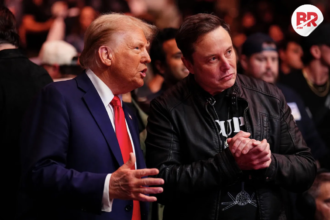
Soybean and wheat prices went up on Thursday after U.S. President Donald Trump hinted at a potential trade deal with an unknown country. Investor confidence also grew with the upcoming U.S.-China talks in Switzerland.
The most active soybean contract on the Chicago Board of Trade (CBOT) increased by 0.19%, reaching $10.41 a bushel, recovering from three days of losses. Wheat prices went up by 0.23%, reaching $5.36 a bushel.

Also Read: Q4 Performance: Coal India Posts 12% Jump in Q4 Earnings and Shares Rises 1.7%
Trump said late on Wednesday that he would announce details of a “major trade deal with representatives of a big, highly respected country.” The New York Times reported that the deal is with Britain. Markets are also paying close attention to the upcoming U.S.-China talks, especially after the announcement that U.S. Treasury Secretary Scott Bessent and chief trade negotiator Jamieson Greer will meet China’s top economic official, He Lifeng, in Switzerland this weekend.

However, some concerns arose after Trump said on Wednesday that he wouldn’t reduce tariffs on Chinese goods ahead of the talks. In response, China’s embassy in Washington stated that the U.S. should stop pressuring China.
China, the world’s largest importer of soybeans, buys a large portion of U.S. soybean exports. Meanwhile, in Brazil, soybean exports could fall by 900,000 tons in May compared to April and May of last year, despite a record harvest.
Also See: United Breweries Leads Market Growth with 5% Volume Increase and 20% Profit Jump!
Good weather in the U.S. Midwest is helping farmers plant corn and soybeans without issues, while rain in the Black Sea wheat-growing region is putting pressure on wheat prices. Corn prices stayed flat at $4.49 per bushel, near a one-month low, due to favorable weather and an upcoming corn harvest in Brazil.
Markets are also reacting to the Federal Reserve’s decision to keep interest rates unchanged and are waiting for the U.S. Department of Agriculture’s (USDA) report on Monday, which will provide the first supply and demand estimates for 2026, including the effects of tariffs.












